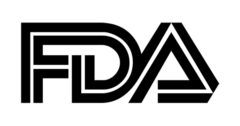
Ask the Experts is a series of reader questions answered by industry advisors. Send us your questions.
Question: What should I be thinking about as I prepare for FDA 510(k) submissions in 2020?
Answer from Robert A. Poggie, Ph.D., President of BioVera: To begin, identify the performance tests and verification and validation (V&V) work for the new product. Should the pre-clinical test plan include costly or lengthy testing, such as simulation wear or assessment of biocompatibility by ISO 10993 for a new biomaterial, it is important to consider FDA’s pre-submission process wherein you would present to FDA a brief outline of your product and the detailed protocol for the resource-intensive tests for which you have questions. The ultimate goal of the pre-submission is to maximize the likelihood of FDA acceptance of the performance toward “substantial equivalence.”
You should assume three months’ time from the date of submission to receipt of feedback from FDA. Should the new product be a straightforward line extension, a 30-day Special 510(k) may be appropriate.
Research the Requirements
FDA’s CDRH website is a wealth of information. The following helpful tools will get you started.
- The Refuse to Accept (RTA) checklist is useful in planning and reviewing the R&D and quality regulatory plans for your product.
- Download the 510(k) summaries for products that are predicate and reference devices to your product and identify information applicable to your product and test plan.
- Applicable FDA guidance documents should be reviewed and requirements identified for the new product. FDA submission processes such as the 510(k) and pre-submission are detailed in FDA guidance documents. Most V&V processes and many specific products are covered by FDA guidance documents, such as cleaning V&V for reusable instruments, software documentation required in a 510(k), non-spine bone screws (ASTM F543), spinal fusion cages, and more. The past five years have seen many updated and new FDA guidance documents focused on V&V of cleanliness, biocompatibility, sterility and shelf life of products, which in some cases includes time and cost-intensive testing. There are old (but still followed) FDA guidance documents on, for example, modified metallic surfaces (porous engineered surfaces for biological fixation) and soft tissue fixation devices such as suture anchors and interference screws for tendons and ligaments. Some of the information may be dated, but most requirements remain relevant.
A complete product development test plan for a 510(k) submission includes a good understanding of the scientific literature for a given device or technology. You may find information that is very useful in making your argument for substantial equivalence without having to spend the money and time testing predicate devices. A good example of this is a paper by Peck et.al., “Mechanical Performance of Cervical Intervertebral Body Fusion Devices: A Systematic Analysis of Data Submitted to the Food and Drug Administration.”
Budget the Time for the 510(k) Process
As part of your commercialization plan, you must be cognizant of FDA’s regulatory process rules. Think about how much time to allot to the 510(k) regulatory process. Companies should budget an absolute minimum of 90 days and up to one year for the process for a traditional 510(k).
The 510(k) review process can be broken into four general periods, consisting of:
- Administrative review wherein FDA applies the RTA checklist to your submission (up to 15 days for approval, or on hold for up to 180 days to address the deficiencies),
- Substantive review process wherein FDA reviews the data and labeling in the 510(k) notification and either clears the 510(k) or issues a request for additional information (AI) (typically 35 to 50 days from date of approval of the RTA checklist),
- Via a formal supplement to the 510(k) notification, the company addresses FDA’s request for AI (up to 180 days from date of letter of request for AI), and
- Final FDA review of the 510(k) and supplement, which often includes interactive e-mails and telephone calls between the FDA and company, resulting in FDA notification of substantial equivalence, or not, within the time remaining on the 90-day 510(k) review clock (90 – RTA days – substantive review days).
In the last several years, FDA has focused on ensuring that process validations are completed before the 510(k) submission. Testing labs are presently backlogged with work, so the process is taking longer. This means that it is very important that the quality team is engaged early in the 510(k) process to be sure that lab time is built into the pre-clinical product testing plan. Early in the execution of the R&D test plan, engage the labs that will perform the work. If your product is destined for an ex-U.S. market, consider how the company can satisfy both CE Mark and FDA 510(k) requirements simultaneously. As best as possible, try to align your Technical File requirements for CE Mark with what you’re doing with your test and V&V plans for the 510(k).
Finally, if you’re a small business, you can save approximately $8,000 for the fee of 510(k) notification. The FDA guidance document and form are on FDA’s website. The form can be completed quickly, and within a few weeks, FDA will issue a letter and small business authorization number, should your business qualify as small. This form must be completed annually to continue to qualify as a small business.
Robert A. Poggie, Ph.D., is President of BioVera, Inc., a consulting company specializing in FDA and Health Canada regulatory strategy and execution, with expertise in biomaterials, applied research and device testing. His previous employers include Smith & Nephew, Implex, Zimmer and Pipeline Orthopaedics.
HT
Heather Tunstall is a BONEZONE Contributor.




